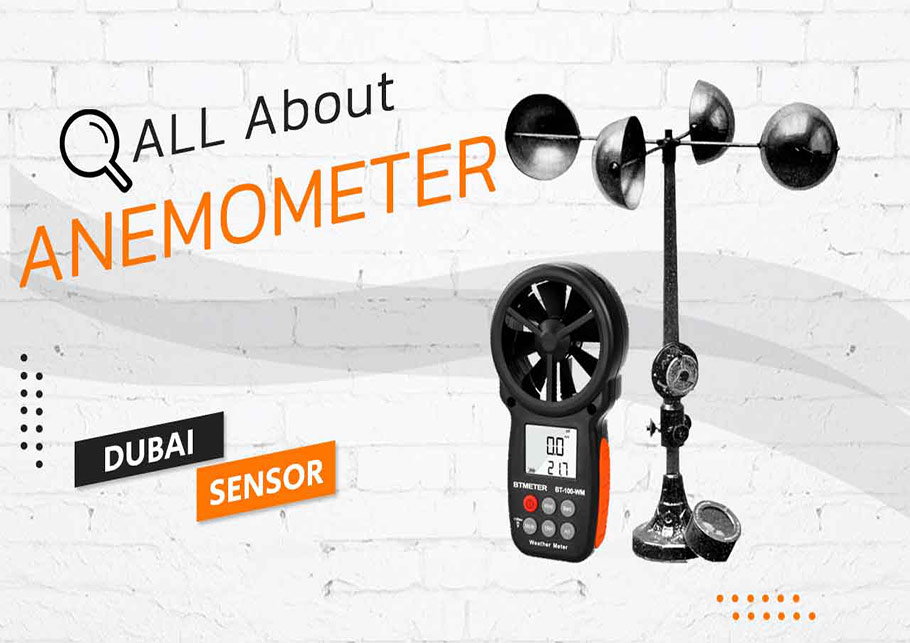Leading Functions to Seek in an Effective Anemometer for Accurate Wind Measurement
Leading Functions to Seek in an Effective Anemometer for Accurate Wind Measurement
Blog Article
Anemometers Introduced: Recognizing Their Value in Ecological Surveillance and Safety And Security Actions
The function of anemometers in ecological tracking and safety procedures is typically ignored, yet their significance is indisputable. From weather forecasting to air travel safety and security, anemometers play a vital role in giving accurate information that informs decision-making procedures and boosts general safety.
Background of Anemometers
The development of anemometers can be mapped back to the old civilizations where fundamental wind gauging tools were first used. One of the earliest recognized anemometers was the hemispherical mug anemometer developed by Leon Battista Alberti in the 15th century.
Over the years, innovations in innovation led to the development of even more modern-day anemometers, consisting of ultrasonic anemometers and laser Doppler anemometers, offering enhanced accuracy and performance in gauging wind speed and direction. The history of anemometers showcases a remarkable trip of advancement and development in the field of meteorology.
Kinds Of Anemometers
Throughout the area of meteorology, numerous kinds of anemometers have been created to precisely measure wind rate and instructions. The most usual type is the mug anemometer, which includes three or 4 cups placed on horizontal arms that rotate with the wind. As the mugs spin, the rate at which they rotate is straight proportional to the wind rate. One more widely utilized type is the vane anemometer, which includes a tail or fin that aligns itself with the wind instructions. This positioning permits the device to establish the wind direction. Sonic anemometers make use of ultrasonic signals to determine wind rate and direction properly. They are frequently utilized in research applications because of their high precision. Hot-wire anemometers operate based upon the principle that the cooling result of wind on a heated cable is symmetrical to the wind speed. These anemometers are suitable for gauging reduced wind rates with high precision. Each type of anemometer has its toughness and is selected based on the specific demands of the tracking job at hand.
Applications in Weather Forecasting
Having actually reviewed the numerous sorts of anemometers used in meteorology for determining wind rate and instructions, it is important to discover their sensible applications in the area. Anemometers play an essential function in weather forecasting by providing accurate and real-time data on wind conditions (anemometer). Meteorologists use anemometers to check wind speed and instructions to anticipate climate patterns, concern warnings for extreme climate occasions like hurricanes, storms, and tornadoes, and examine weather for aeronautics safety and security
In weather forecasting, anemometers aid in comprehending regional and local wind patterns, which are vital for forecasting weather condition changes and identifying climatic patterns. These tools are also used in study to examine microclimates, urban heat islands, and air contamination diffusion. Furthermore, anemometers are employed in farming to optimize plant administration methods, such as irrigation and chemical application, based on wind problems.
Significance in Aeronautics Safety And Security
An essential facet of guaranteeing aviation safety lies in the careful monitoring of wind problems using anemometers. Anemometers play a critical role in aeronautics by providing real-time information on wind rate and direction, assisting pilots in making educated decisions during landing, trip, and liftoff. Solid and unpredictable winds can significantly affect airplane operations, making it vital for aeronautics authorities to count on accurate wind measurements to make sure the safety of passengers and team.

In the dynamic atmosphere of aeronautics, where also minor adjustments in wind speed and direction can have extensive effects, anemometers stand as important devices for promoting protected and Continue safe flight.
Function in Environmental Study
Anemometers play an important function in ecological research study by giving crucial information on wind rate and instructions. By properly determining wind qualities, anemometers aid scientists evaluate the motion of contaminants in the air, examine the effect of industrial discharges, and forecast the spread of impurities in the setting.


Conclusion
Finally, anemometers have actually played a vital role in environmental monitoring and security procedures. With an abundant history and different types offered, these tools have actually been commonly used in weather forecasting, aeronautics safety, and environmental study. Recognizing the relevance of anemometers is vital for properly determining wind rate and direction, which is vital for forecasting weather condition patterns, guaranteeing safe aviation procedures, and carrying out environmental check my site researches - anemometer. Their contributions to these areas can not be taken too lightly.
One of the earliest known anemometers was the hemispherical mug anemometer invented by Leon Battista Alberti in the 15th century. Over the years, innovations in technology led to the growth of more modern-day anemometers, consisting of ultrasonic anemometers and laser Doppler anemometers, providing raised precision and effectiveness in gauging wind speed and instructions. Hot-wire anemometers run based on the principle that the cooling effect of wind on a warmed wire is proportional to the wind rate. Meteorologists make use of anemometers to keep track of wind rate and instructions to anticipate weather patterns, problem he has a good point cautions for extreme weather events like storms, tornadoes, and storms, and analyze atmospheric conditions for air travel security.
Comprehending the significance of anemometers is vital for precisely determining wind rate and instructions, which is crucial for forecasting climate patterns, ensuring safe aviation procedures, and performing ecological researches. (anemometer)
Report this page